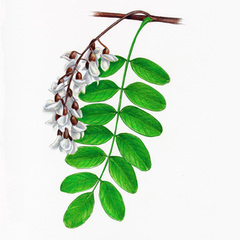Methods
Checklists
There are circa 1,600 native and 1,400 introduced vascular plants in Massachusetts, including 100 invasive species.
Peter Alden and our informal network of expert state naturalists will select 1,000
of these for which we will build web identification guides and species pages.
Among our target species, we will include all trees, shrubs, vines, ferns, and invasives.
Similarly, we propose to build online guides and species pages to 1,000 animals,
including all the vertebrates (approximately 100 mammals, 300, birds, 40 herps, and 60 fish) and
selected arthropods (all ants, butterflies, dragonflies and damselflies; some spiders, bees, beetles, and other groups).
Species pages
Peter Alden will write a web page for each of the 2,000 target species
using his extensive library, slide collection, and other resources.
His pages will include at least five fun facts that school children and the general public will find
interesting about the biology, distribution, and importance of each species in Massachusetts.
Images
In each page, we will include at least one high-quality diagnostic image.
We will get these images from many sources:
our personal slide collections, those of our colleagues, by soliciting them from organizations and individual photographers,
by adding links to other web sites,
and, as a last resort, by actually taking more photographs.
In all cases, our web pages will give appropriate attribution to image sources, thus protecting each owner's copyright.
If contributors wish, in exchange for use of their material,
we will customize discrete links below their images to advertise their photographs, illustrations, and books commercially.
Local and seasonal identification guides
Discover Life's IDnature guide software allows us to build and quickly customize guides using local and seasonal checklists.
Once we build statewide guides for the 2,000 species, it will be very easy for local naturalists
to use checklists to build guides specific to towns, nature preserves,
school yards, and other areas of interest. Students could easily build a web guide to their school's trees and shrubs, for example,
as did Cedar Shoals High School in Georgia
(see http://www.discoverlife.org/ed/si/GA/acc/cedar_shoals_hs).
Once we have enough users reporting their sightings, the technology will allow us to serve dynamic guides.
Rather than thumbing through large paper guides to wildflowers of eastern states, we envision a web community sharing
guides to, say, the "Wildflowers in bloom this week on Beacon Hill."
For the bird watchers, we could generate "Spring warblers that you might see at Mt. Auburn Cemetery this weekend."
Or, for the gardeners, "Invasive vines of Concord that you should remove from your yard -- mind the Poison ivy, Gladys."
Maps
We will include a link on each species page to our Global Mapper. Thus, users will be able to see their findings and those of others at scales
ranging from global satellite images to local aerial photographs of their neighborhoods. The Global Mapper is a joint venture between
Discover Life and Topozone.com, a Massachusetts internet company founded and run by Ed McNierney.
Clearly, we will address data quality issues in presenting such distribution maps,
allowing users to choose from all points available to limited sets that we filter by the reliability of their sources.
Research protocols
Over the next year, Discover Life and some of its partners intend to develop research protocols to help students and other citizens
become involved in biodiversity studies and learn from their experience
(see http://www.discoverlife.org/pa/or/polistes/ev/2006ga.html).
In March, we spoke with Joan FitzGerald and Marie Studer about involving EarthWatch in this process. We hope that EarthWatch will be able
to provide summer internships to four teachers who will work toward this objective. We envision that these teachers will learn
Discover Life's tools in a 5-day workshop at the University of Georgia in July,
then work in a national park or other conservation area with associated scientists and staff for two weeks,
and finally return to their communities to develop protocols and lesson plans specific to their local biodiversity.
As part of this proposal, Peter Alden and Discover Life's staff will work with teachers and
volunteers to develop protocols and test them with school children and citizen volunteers.
Promote use
We cannot expect governmental funding for all the biodiversity research we need, because of the enormity of the task at hand.
Instead citizens and non-government organizations must join together to gather fine-grained data over large geographic regions.
Discover Life's technology and the work proposed here will enable school children and citizen scientists to identify
species and report their observations. If we successfully promote the use of the proposed system,
citizens will be able to monitor changes in the abundance, distribution, and seasonality of species throughout Massachusetts.
We plan to seek the help of potential partner organizations in Massachusetts, such as the Massachusetts Audubon Society,
New England Wildflower Society, and Nuttall Ornithological Club.
Together we intend to build an army of citizen naturalists
who will share the joy of nature with future generations and teach them how to help in its stewardship.
Summary
This is a marriage between old-fashioned expertise in natural history and state-of-the-art technology.
We propose to empower Peter Alden, a naturalist par excellence, but hopeless computer Luddite,
with Discover Life's proven web capabilities.
Thus, Peter will be able to share his knowledge and love of nature with all of Massachusetts and,
for that matter, at no extra cost to anyone, with the rest of the world.
Budget

